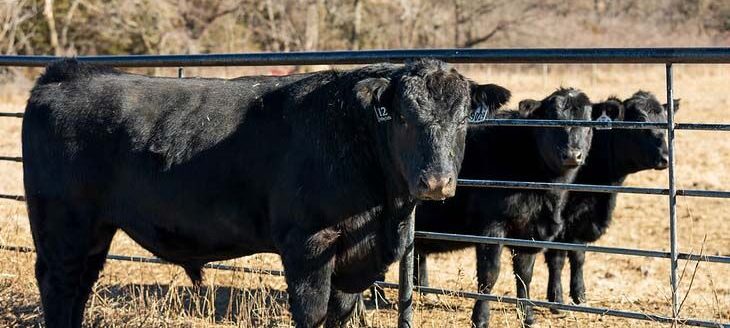Unique genetics project demonstrates effectiveness of EPDs and DNA testing
More than 40 calves produced from one cow, all in the name of genetic research. That’s something you don’t see every day. This research, dubbed the LiveWiRED project, is a cooperative effort between the Junior Red Angus Association of America and the Red Angus Foundation, Inc. The plan is to evaluate the real-world performance of calves compared to their sires’ EPDs for growth and carcass traits. A host of data has been collected on the calves, including DNA profile information, which will be used to generate a complete “genetic trail,” tracking from parental EPDs to progeny DNA and finally the actual performance of those progeny.
The research is unique in that a single Gelbvieh cow, “Penny,” served as the donor female for the entirety of the project. With only one dam for all LiveWiRED calves, sire genetics are isolated and progeny performance on the project’s different Red Angus sires can be accurately compared to their EPDs. Three of the Red Angus sires used in the project ranked high for growth and carcass-value traits, while the other two sires ranked at the lower end of the bell curve. Throughout the duration of the project, the two sire groups will be compared in various ways and, in some cases, calves by individual sires will also be compared to each other in order to determine if observed performance differences match those predicted by the sires’ EPDs.
Born in August 2017, the LiveWiRED calves are now long yearlings and are being finished in a Kansas feedyard with a projected slaughter date of March 1, 2019. Prior to entering the feedyard, DNA and weaning weight information were collected for analysis and junior Red Angus members are excited to utilize this data for the next phase of this three-year endeavor. Adjusted weaning weights between the two sires with the most progeny in the study (one high in growth and the other low) were different by 28 pounds (P<0.01), favoring the high-growth sire. Also, of note, the entirety of the high-growth-sired calves outgained their low-growth-sired counterparts by 0.4 pounds per day during their first 71 days in the feedyard.
A positive correlation between phenotypic and genomic data, as compared to EPDs, was found when analyzing the weaning weight and DNA information. These results provide positive reassurance to the initial goal of the project – proving the accuracy of EPDs. As the calves continue to grow, their performance in the finishing and carcass stage of production will be valuable information as the LiveWiRED project nears completion.
JRA members have been benefitting from this project since its inception in January 2016 by observing real-life aspects of beef production in coordination with the growth stage of the LiveWiRED calves. The project serves as a valuable educational tool for all ages of beef producers and will continue to yield valuable educational results. A final research report detailing all the findings of the project will be published in the second quarter of 2019.
For more information on the JRA or the LiveWiRED project, visit http://epdsinaction.blogspot.com.

